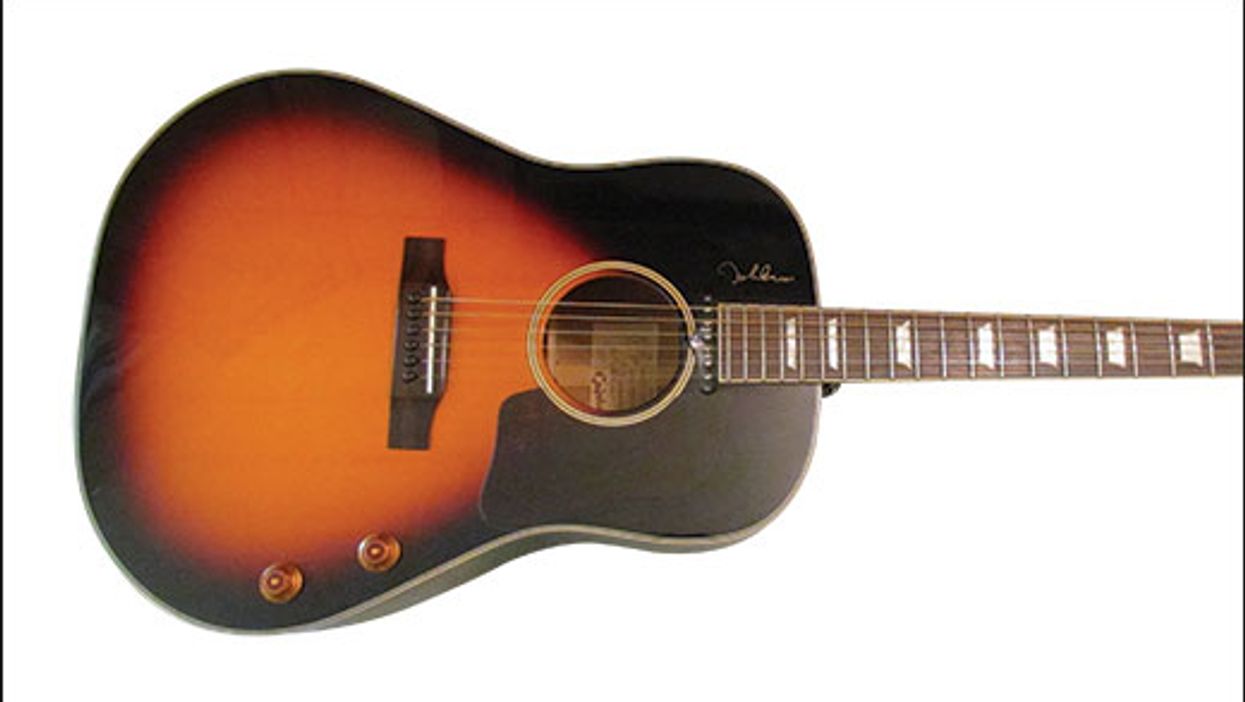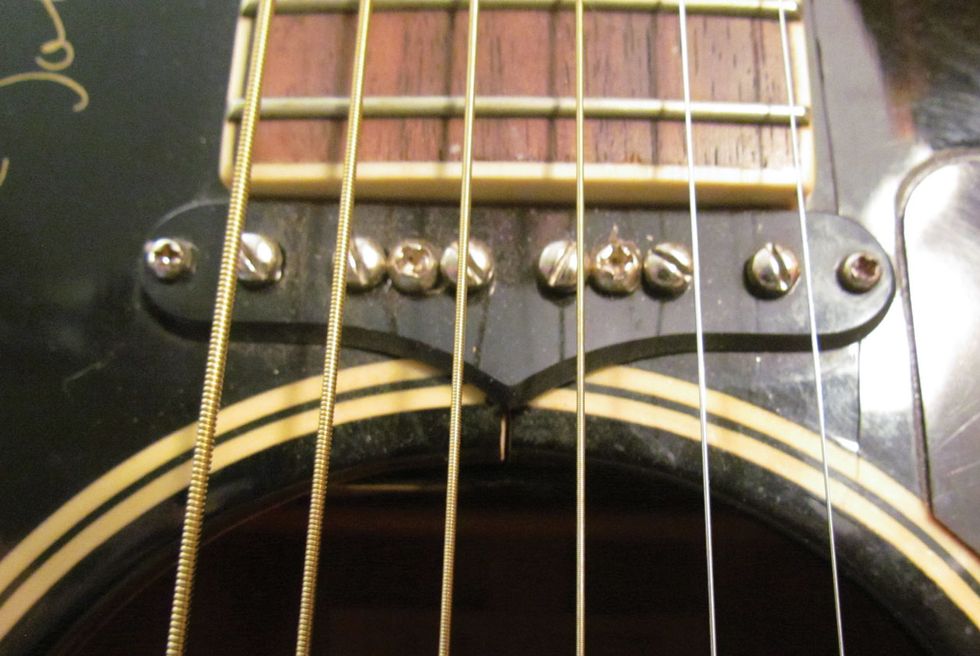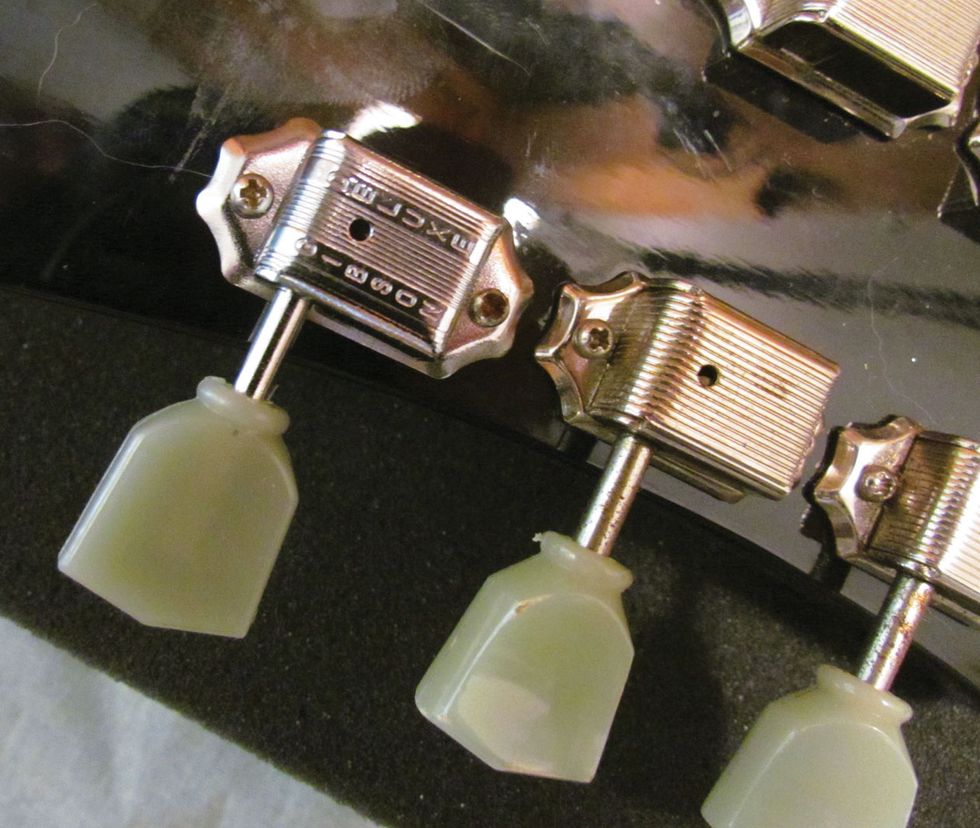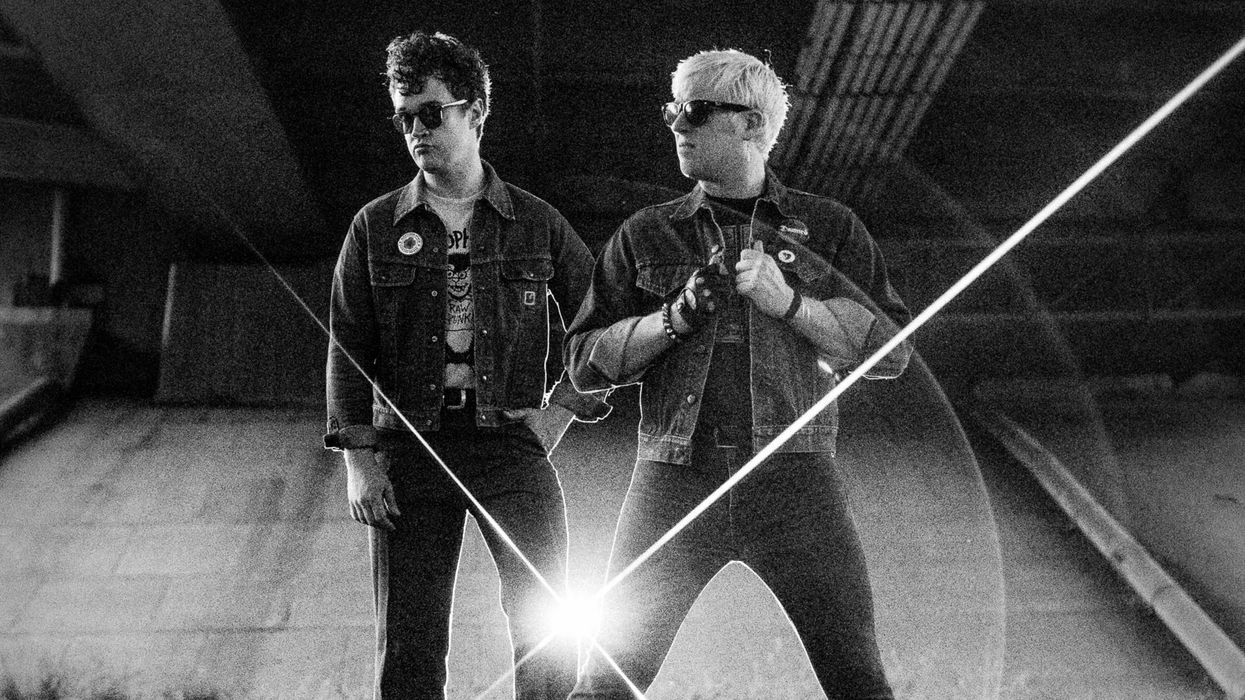Every now and then I'll see a guitar on TV or in a magazine, and say to myself, “Yeah, I used to own one of those. It was a great guitar. Wonder why I sold it?" A Gibson J-160E was one of those guitars. The Beatles used J-160Es on all their albums. Years ago, I owned one from the '60s, but sadly let it slip away.
About six months ago, I ran across an Epiphone John Lennon signature model EJ-160E, but it had a few problems. The first was a tiny split in the wood at the soundhole near the pickup. The second was a tuning gear that was broken off at the stem. The seller had plenty of pictures, so I studied them thoroughly—especially the ones pertaining to the problems.
The tuning gear didn't bother me. I figured I could find a replacement easily on eBay. And the wood split wasn't a big deal, because it was not a structural split in the wood, only cosmetic, and looked to be only about 1/8" long in the pics. So, I sniped the guitar at the last minute, winning it for $200 plus $19.29 shipping.
The seller said he was out of town for a week, and asked if he could ship it upon his return. I said “no problem" and began looking for sources for a Kluson Deluxe tuner. I found that I could get a full set of the replacement tuners for $7.25, including shipping from China. I figured I could always use the extra tuners on projects down the road, so I pulled the trigger on a set.
This guitar's mini acoustic humbucker is pinned tight to the body end of the neck, which has a rosewood
fretboard with trapezoid inlays.
My tuners arrived a few days after the guitar, and changing out the bad tuner took only three minutes. What's interesting about the tuners I got from China is they're stamped “Gibson," while the original Epiphone ones are not.
Another interesting thing: This guitar has the lowest action I think I've ever encountered on an acoustic. And it's not just mine. I've tried other J-160Es and they were the same way. Way to go Epiphone.
Although it's a perfect swap-out, the replacement tuners Will Ray ordered from China bear Gibson's name. The guitar's original Epi tuners have no branding.
Bottom Feeder Tip #3171: Sometimes you can find a guitar with a flaw that can be easily corrected if you've got the skills. Changing out a tuner is pretty easy—especially if you're using a direct replacement.
So, how is the guitar? I really like it! It has become my go-to acoustic for songwriting, and playing it is easy as pie. It sounds good as an acoustic, and when plugged in it has more of an electric guitar sound instead of your typical piezo sound—likely due to its stock acoustic mini humbucker. Keep in mind, the pickup is a fair distance from the strings, so you can't exactly rock out like you can on a regular electric. Check out my sound sample and judge for yourself. It's a keeper.













![Rig Rundown: Russian Circles’ Mike Sullivan [2025]](https://www.premierguitar.com/media-library/youtube.jpg?id=62303631&width=1245&height=700&quality=70&coordinates=0%2C0%2C0%2C0)








